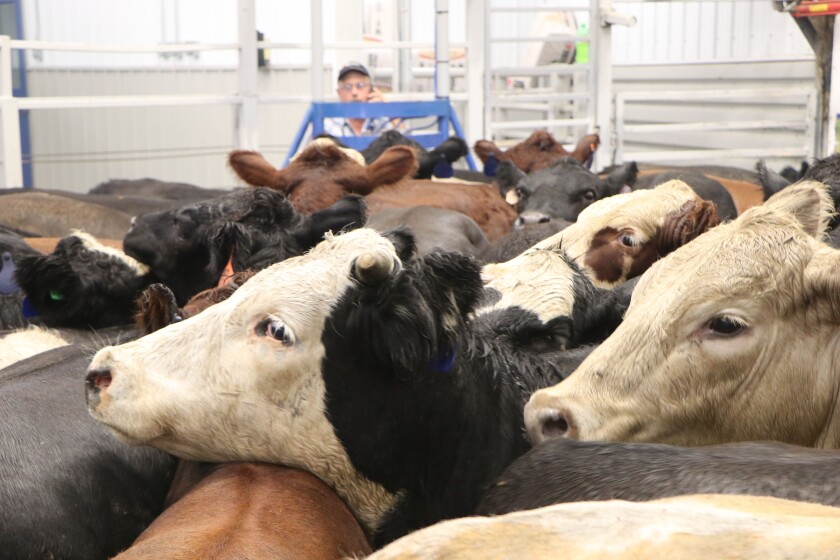Professional Advice: Bagley Risk Management Strategies
Professional Advice: Bagley Risk Management Strategies
Blog Article
Trick Variables to Think About When Deciding On Animals Risk Protection (LRP) Insurance Coverage
When assessing options for Animals Risk Security (LRP) insurance, numerous crucial variables call for mindful consideration to make sure efficient risk management in the farming sector. Picking the appropriate insurance coverage choices customized to your particular livestock procedure is vital, as is comprehending how premium prices associate with the degree of protection used.
Protection Options
When taking into consideration Livestock Danger Security (LRP) insurance coverage, it is necessary to comprehend the numerous insurance coverage options offered to minimize risks in the farming sector. Livestock Danger Security (LRP) insurance policy provides different protection choices tailored to satisfy the varied needs of animals manufacturers. Bagley Risk Management. One of the key coverage alternatives is rate protection, which protects against a decrease in market prices. Producers can select the protection degree that lines up with their price danger monitoring objectives, permitting them to secure their procedures versus prospective monetary losses.
Another crucial protection option is the endorsement duration, which determines the length of time the insurance coverage holds. Producers can choose the recommendation period that finest suits their manufacturing cycle and market problems. Additionally, protection degrees and rates differ based on the kind of livestock being guaranteed, providing manufacturers the flexibility to customize their insurance policy plans according to their particular needs.
Understanding the various insurance coverage alternatives available under Livestock Danger Protection (LRP) insurance policy is critical for producers to make enlightened choices that efficiently shield their livestock procedures from market unpredictabilities.
Premium Expenses

Livestock Risk Protection (LRP) insurance coverage supplies important coverage choices tailored to minimize threats in the farming market, with a significant element to take into consideration being the estimation and framework of premium costs. These include the kind and number of livestock being insured, the insurance coverage level chosen, the existing market costs, historic cost data, and the size of the coverage duration.
Premium expenses for LRP insurance are commonly determined based on actuarial information and risk analysis models. Insurance firms examine historic data on animals prices and manufacturing costs to establish a suitable costs that reflects the degree of risk included. It is essential for livestock manufacturers to very carefully review premium expenses and insurance coverage options to ensure they are adequately secured versus potential monetary losses as a result of unfavorable market problems or unforeseen occasions. By understanding exactly how exceptional costs are determined and structured, manufacturers can make enlightened decisions when choosing the ideal LRP insurance coverage policy for their operation.
Eligible Livestock
The determination of qualified animals check these guys out for Livestock Risk Defense (LRP) insurance coverage entails mindful consideration of specific standards and attributes. Livestock kinds that are normally eligible for LRP insurance policy consist of feeder cattle, fed swine, lambs, and cattle.
Feeder cattle, for instance, are commonly qualified for LRP protection if they drop within specified weight varieties. Lambs are an additional classification of animals that can be considered for LRP insurance policy, with elements such as weight and age playing a critical function in determining their qualification.
Before picking LRP insurance for animals, producers need to meticulously evaluate the qualification requirements outlined by the insurance provider to guarantee their pets satisfy the needed demands for insurance coverage.
Policy Flexibility
Plan versatility in Livestock Danger Protection (LRP) insurance policy allows manufacturers to tailor coverage to match their certain needs and run the risk of management approaches. This versatility empowers animals producers to tailor their insurance plans based on elements such as the type of animals they own, market problems, and individual danger tolerance levels. By supplying customizable choices, LRP insurance makes it possible for producers to effectively handle their risk exposure while securing their animals operations against unanticipated market volatility.
Claims Process
Upon experiencing a loss or damages, manufacturers can initiate the insurance claims procedure for their Livestock Risk Security (LRP) insurance by quickly calling their insurance supplier. It is important for manufacturers to report the loss as soon as possible to accelerate the cases process. When connecting to the insurance coverage copyright, producers will address require to provide comprehensive info regarding the occurrence, consisting of the day, nature of the loss, and any appropriate documentation such as veterinary records or market rates.

After the assessment is total, the insurance coverage provider will decide concerning the case and communicate the result to the manufacturer. If the claim is authorized, the manufacturer will certainly receive payment according to the regards to their Animals Risk Security (LRP) insurance plan. Bagley Risk Management. It is important for producers to be knowledgeable about the cases procedure to ensure useful link a smooth experience in case of a loss

Final Thought
Finally, when picking Animals Risk Defense (LRP) insurance policy, it is vital to take into consideration insurance coverage alternatives, premium prices, qualified livestock, policy flexibility, and the claims process. These key factors will aid make certain that herdsmans and farmers are appropriately shielded versus prospective dangers and losses associated with their livestock procedures. Making an educated decision based on these factors to consider can eventually result in better economic safety and peace of mind for livestock manufacturers.
Livestock Threat Security (LRP) insurance coverage provides various protection options customized to meet the diverse demands of livestock producers.The decision of eligible animals for Livestock Threat Protection (LRP) insurance policy coverage entails cautious consideration of details requirements and features.Policy versatility in Livestock Threat Security (LRP) insurance policy allows manufacturers to tailor coverage to fit their details needs and run the risk of monitoring approaches.Upon experiencing a loss or damage, manufacturers can initiate the cases process for their Livestock Threat Protection (LRP) insurance coverage by promptly contacting their insurance policy service provider.In verdict, when selecting Livestock Danger Defense (LRP) insurance, it is essential to think about insurance coverage options, premium costs, eligible animals, plan flexibility, and the claims process.
Report this page